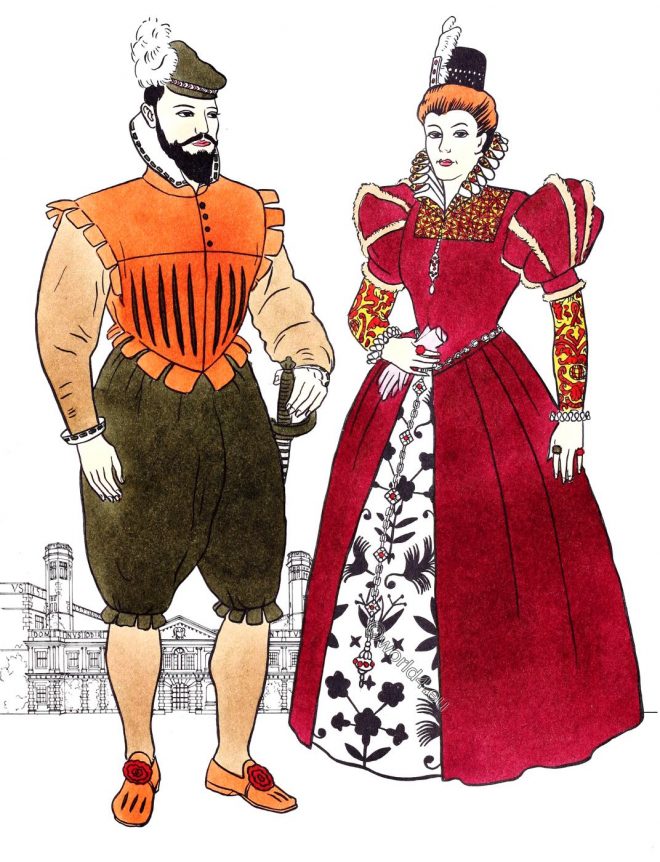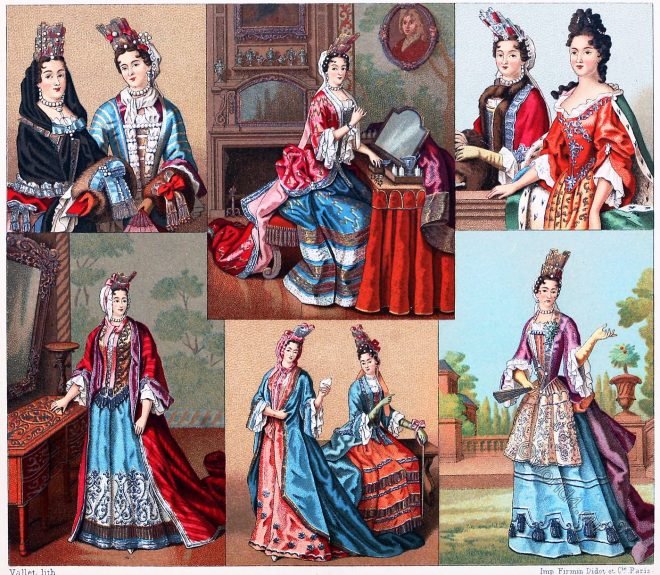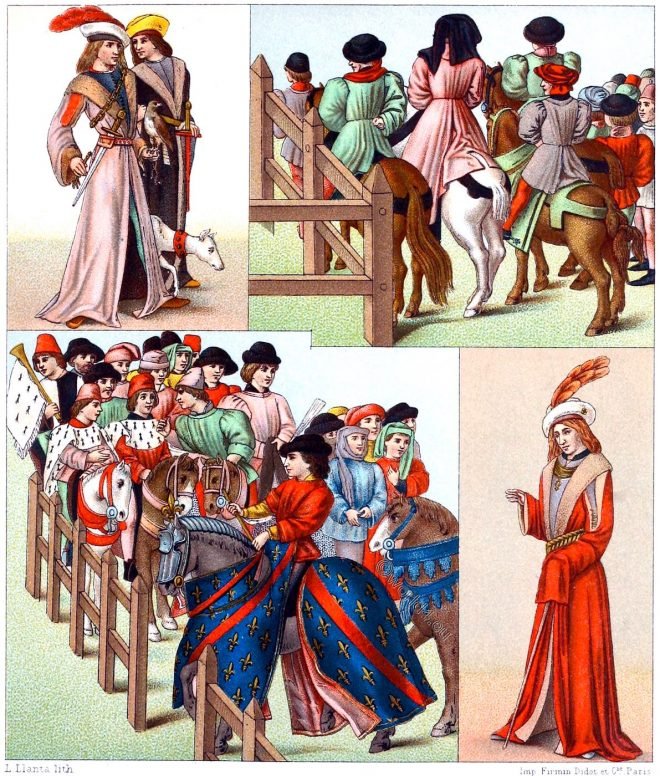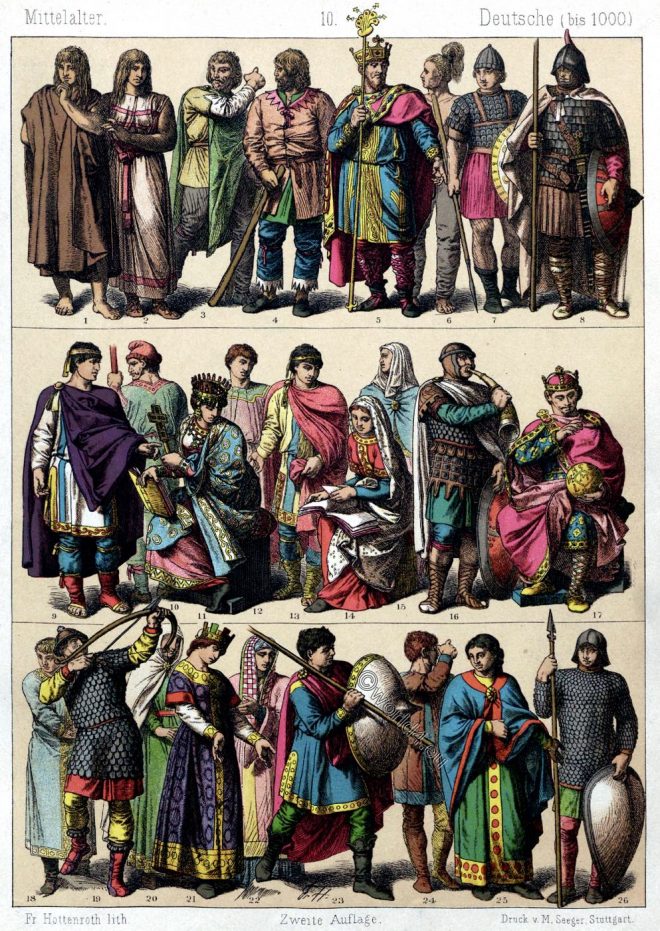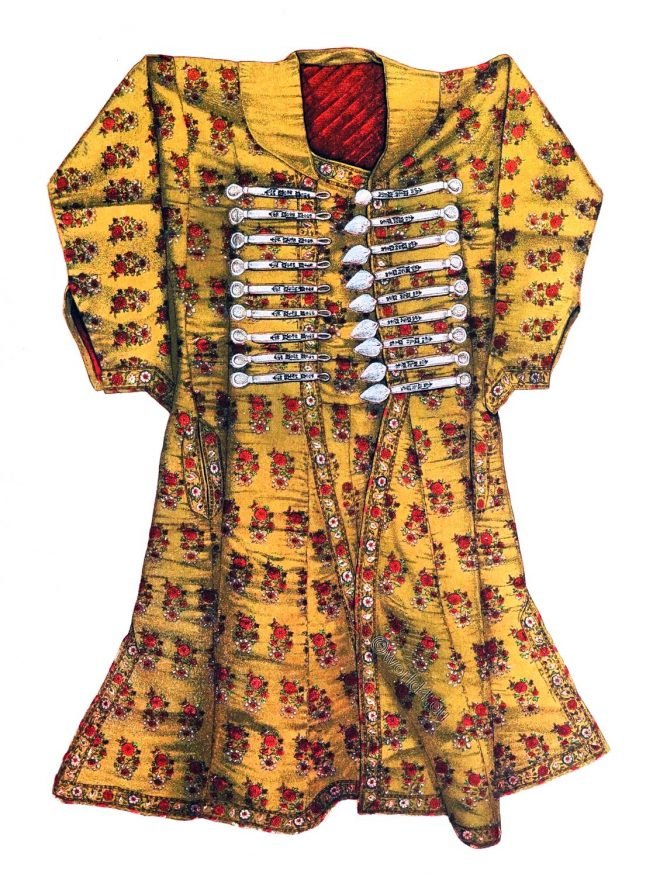This man and woman on their way to church are dressed in a manner becoming the late Victorian aristocrats on a semiformal afternoon occasion.
Category: Nobility
Elizabethan. Explorer of noble rank. Woman of the upper classes.
Tudor period. English Renaissance. Explorer of noble rank. Woman of the upper classes. Elizabethan fashion history.
Female fashion. The Capote. The Muff. The Baskine. Reign of Louis XIV.
Female fashion. Second half of the reign of Louis XIV. The Capote, The Muff. The Fontange. The Baskine. The lace apron. The House Dresses.
Costume variations of the Byzantine King and Queen. 400-1100 AD.
The two figures shown here represent several new varieties of Byzantine costume.
The challenger of the tournament. Noblemen of the court of Charles VIII.
Medium Age. France. The challenger of the tournament. Noblemen of the court of Charles VIII. Entering the barriers to taking the oath. Noblemen of the court of Charles VIII.
Byzantium. Costumes of the Eastern Roman emperor and empress.
History of Costume. Byzantium. 400 – 1100 AD. Costumes of the Eastern Roman emperor and empress.
German clothing up to the 10th c.. Goths, Lombards, Merovingians.
German people in the dress at the end of the 10th century. Lombard king. Merovingian Franks. Carolingian Franks. Clothing in the Middle Ages.
The origin of the coiffure à la Fontanges under Louis XIV.
Ladies of high standing in the transition from the 17th to the 18th century, after rare coloured copper engravings of that period. Female fashion of the baroque in the 17th and 18th century.
Mughal Emperor Humayun in the usual court attire of an audience.
Mughal Emperor Nasir ud din Muhammad Humayun in the usual court attire of an audience. Mogul lady in a house costume. Farrukhsiyar, grandson of Grand Mogul Aurangzeb. Farrukhsiyar 10th Grand Mogul of India.
Coat of Maharaja Sawai Jai Singh II (1686-1743), founder of Jaipur, India.
Coat of Maharaja Sawai Jai Singh II (1686-1743), founder of Jeypore (Jaipur); silk and gold, embroidered with silk.


